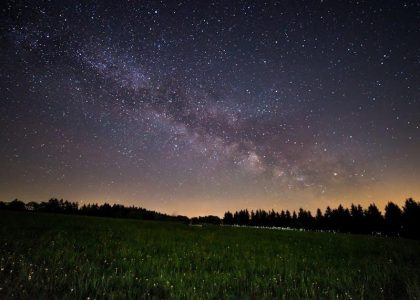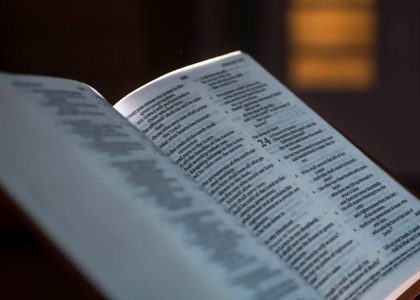In The Return of the Gods, Jonathan Cahn explores the resurgence of ancient deities influencing modern Western culture, revealing profound connections between historical myths and contemporary societal shifts.
1.1 Overview of “The Return of the Gods”
The Return of the Gods by Jonathan Cahn delves into the resurgence of ancient deities and their profound influence on modern society. Cahn explores how gods like Ishtar and Molech, once worshipped in Mesopotamia, are reemerging in contemporary culture, shaping trends in gender, sexuality, and spirituality. Drawing from ancient inscriptions and biblical prophecy, the book reveals a startling connection between historical myths and current societal shifts. Cahn argues that these deities’ return reflects a broader spiritual battle, warning of a clash between monotheism and polytheism; The book is both a historical analysis and a prophetic warning, urging readers to understand the deeper spiritual forces at play in the world today.
By examining ancient parables and modern events, Cahn provides a compelling narrative that bridges the past and present, offering insights into the divine plan and humanity’s role within it.
1.2 Significance and Relevance in Modern Society
The Return of the Gods holds profound significance in today’s world, as it sheds light on the cultural and spiritual shifts driven by the resurgence of ancient deities. Cahn argues that the modern embrace of pagan ideologies, particularly in areas like gender identity and sexual morality, mirrors the worship of gods such as Ishtar and Molech. This book serves as a warning, revealing how these ancient entities continue to shape contemporary values, often eroding traditional family structures and spiritual foundations. By connecting biblical prophecy with historical patterns, Cahn underscores the relevance of understanding these forces in navigating the spiritual battles of our time. Ultimately, the book calls for awareness and a return to timeless truths in the face of growing cultural and moral upheaval.

Historical and Cultural Context
The Return of the Gods delves into the historical roots of ancient Mesopotamian deities, tracing their influence on modern cultural and spiritual trends, revealing timeless connections between past and present societies.
2.1 Mesopotamian Deities and Their Influence
The ancient Mesopotamian deities, such as Ishtar and Molech, wielded significant influence over the cultural, religious, and societal structures of their time. These gods were often associated with fertility, war, and human sacrifice, shaping the moral and ethical frameworks of early civilizations. Their impact extended beyond religious practices, influencing art, law, and governance. In The Return of the Gods, Jonathan Cahn argues that these deities’ influence has resurfaced in modern Western society, manifesting in contemporary issues like gender identity and the erosion of traditional family structures. By examining ancient inscriptions and historical texts, Cahn draws parallels between the reverence of these gods in antiquity and their subtle yet profound presence in today’s world.
2.2 The Role of Ishtar and Molech in Ancient Cultures
Ishtar, the Mesopotamian goddess of fertility, love, and war, held immense cultural and religious significance, shaping societal norms and rituals. Her influence extended to art, literature, and even political structures, as rulers often sought her favor. Molech, a deity associated with the Ammonites, was revered through brutal practices, including child sacrifice, reflecting a dark side of ancient religious devotion. Both deities embody the duality of divine power—Ishtar as a symbol of life and fertility, and Molech as a harbinger of sacrifice and destruction. Their roles in ancient cultures highlight the complex interplay between spirituality and morality, which Jonathan Cahn argues has resurfaced in modern times, influencing contemporary societal trends and ethical dilemmas.

The Return of the Gods
Jonathan Cahn reveals how ancient deities like Ishtar and Molech are reemerging, influencing modern culture and societal shifts, signaling a profound spiritual and cultural resurgence.
3.1 The Resurgence of Ancient Deities
In The Return of the Gods, Jonathan Cahn examines the resurgence of ancient deities like Ishtar and Molech, whose influence is evident in modern cultural shifts, particularly in gender roles and religious values. These deities, once worshipped in Mesopotamia, are now reshaping Western society through their reemergence in contemporary trends. Cahn argues that their return is not merely symbolic but a tangible force driving societal changes, reflecting a clash between monotheism and polytheism. This resurgence is linked to biblical prophecies and historical patterns, suggesting a cycle of spiritual and cultural rebellion. The book highlights how these ancient entities are reclaiming their influence, challenging modern secularism and prompting a reevaluation of spiritual foundations.
3.2 Evidence of Their Influence in Modern Trends
The resurgence of ancient deities is evident in modern cultural trends, where themes of gender identity, sexual liberation, and spiritual pluralism align with the worship of gods like Ishtar and Molech. These deities, historically associated with fertility and sacrifice, are mirrored in contemporary movements advocating for radical societal changes. The book highlights how modern secularism, with its emphasis on individualism and moral relativism, inadvertently creates fertile ground for the return of these ancient influences. Cahn argues that the cyclical nature of history, as seen in ancient civilizations, is repeating itself, with modern society embracing practices and ideologies that echo the paganism of the past. This alignment is not coincidental but reflective of a deeper spiritual conflict shaping the world today.

Biblical and Spiritual Implications
The return of ancient deities aligns with biblical prophecies, signaling a spiritual battle between monotheism and polytheism, as modern society embraces ideologies mirroring pagan practices.
4.1 Biblical Prophecy and Ancient Gods
Jonathan Cahn connects the resurgence of ancient deities like Ishtar and Molech to biblical prophecies, suggesting their return signals a spiritual decline and a clash of worldviews. He draws parallels between modern cultural shifts and ancient idolatrous practices, warning of a divine judgment. Cahn argues that the Bible forewarns of such events, where forgotten gods reemerge to challenge monotheistic beliefs. This resurgence, he claims, is not merely cultural but deeply spiritual, reflecting a broader struggle between light and darkness; By examining ancient inscriptions and biblical texts, Cahn unveils a startling alignment between prophecy and contemporary trends, urging believers to recognize the spiritual battle unfolding.
4.2 Spiritual Warfare in Contemporary Times
In The Return of the Gods, Jonathan Cahn highlights the resurgence of ancient deities as a form of spiritual warfare, where modern society faces a clash between monotheistic beliefs and polytheistic influences. He argues that the return of these gods represents a deliberate spiritual attack on Western culture, eroding traditional values and promoting moral relativism. Cahn emphasizes that this conflict is not merely cultural but deeply spiritual, requiring believers to engage in prayer and intercession as powerful weapons against the forces of darkness. By examining ancient inscriptions and biblical prophecy, Cahn urges Christians to recognize the spiritual battle unfolding and to stand firm in their faith, combating the influence of these ancient entities through divine authority and truth.
Societal Impact
The resurgence of ancient deities like Ishtar and Molech has led to significant cultural shifts, influencing modern societal trends and reshaping gender roles and family structures.
5.1 Cultural Shifts and Gender Roles
The return of ancient deities has sparked profound cultural shifts, particularly in gender roles. The resurgence of figures like Ishtar, associated with femininity and fertility, has influenced modern movements advocating for gender fluidity and challenging traditional norms. This shift is evident in the increasing acceptance of non-binary identities and the reevaluation of gender roles in society. Cahn argues that these changes are not merely coincidental but are deeply rooted in the revival of pagan ideologies that emphasize diverse expressions of gender and sexuality. As a result, contemporary culture is witnessing a blending of ancient and modern values, leading to a reshaping of societal norms and expectations surrounding gender.
5.2 The Erosion of Family Structures
The resurgence of ancient deities has coincided with a significant erosion of traditional family structures. The influence of gods like Molech, historically associated with child sacrifice, is mirrored in modern societal trends that devalue the sanctity of life and family. The rise of alternative family forms and the decline of the nuclear family reflect a cultural shift away from biblical values. Cahn argues that the return of these pagan entities has led to a disintegration of familial bonds, as ancient practices and ideologies resurface. This erosion is further evident in the increasing acceptance of single-parent households, child-free movements, and the redefinition of parenthood, all of which align with the chaotic and disruptive nature of ancient pagan cultures.

The Role of America
America’s spiritual journey and founding principles are central to the narrative, as ancient deities’ resurgence aligns with shifting societal values, reflecting a clash of divine and cultural forces.
6.1 America’s Spiritual Journey
America’s spiritual journey is deeply intertwined with its founding principles, rooted in divine providence. The nation, once a beacon of monotheistic values, now faces a cultural shift toward secularism and pluralism. The Return of the Gods highlights how ancient deities’ resurgence aligns with this transformation, challenging America’s spiritual identity. Jonathan Cahn traces the nation’s path from its biblical foundations to modern societal changes, emphasizing the clash between monotheism and polytheism. The book suggests that America’s spiritual awakening is crucial in countering the influence of these ancient entities, urging a return to foundational truths to navigate the spiritual battleground of contemporary times.
6.2 The Nation’s Founding and Spiritual Significance
America’s founding was deeply rooted in spiritual principles, with the Founding Fathers envisioning a nation under divine providence. The Return of the Gods examines how this spiritual foundation is central to understanding the nation’s role in the modern world. Jonathan Cahn highlights the historical and biblical significance of America’s origins, linking its rise to a unique divine purpose. The book explores how the nation’s spiritual awakening and its adherence to monotheistic values were pivotal in shaping its identity. However, the resurgence of ancient gods challenges this legacy, prompting a reevaluation of America’s spiritual roots and its continued relevance in a world grappling with polytheistic influences and secularism.

The Ancient Parable
The ancient parable, rooted in Jesus’ teachings, serves as a warning and guide, revealing the cyclical nature of history and the return of ancient gods’ influence.
7.1 Jesus’ Parable and Its Modern Application
JESUS’ PARABLE, as explored in The Return of the Gods, offers a timeless lesson. It speaks of a land once cleared of evil forces, but when neglect sets in, those forces return. This ancient teaching mirrors modern society’s spiritual decline. Cahn connects the parable to today’s cultural shifts, where ancient deities like Ishtar and Molech symbolize the resurgence of pagan influences. The parable serves as a warning, urging believers to remain vigilant and rooted in faith. Its application today is profound, revealing how historical patterns repeat when societies abandon divine principles. This insight challenges readers to reflect on their spiritual foundations and the world’s direction.
7.2 Unveiling the Mysteries of the Parable
In The Return of the Gods, Jonathan Cahn deciphers the deeper meanings of Jesus’ parable, revealing its connection to ancient inscriptions and modern events. The parable’s imagery of a land cleansed but later overrun by evil forces mirrors the cyclical nature of history. Cahn identifies these forces with ancient deities like Ishtar and Molech, whose influence reemerges in contemporary culture. By linking biblical prophecy to historical patterns, he uncovers how societal shifts, such as changes in gender roles and religious values, align with the parable’s warning. This unveiling not only explains current trends but also serves as a call to spiritual awakening, urging readers to recognize the divine plan unfolding in the world.

Evidence and Patterns
Archaeological evidence and ancient inscriptions reveal patterns of historical cycles, showing how forgotten deities like Ishtar and Molech resurface, influencing modern culture and societal shifts.
8.1 Archaeological Evidence of Ancient Gods
Archaeological discoveries in Mesopotamia, including inscriptions from Sumer, Assyria, and Babylonia, provide compelling evidence of ancient deities’ existence and worship. These findings reveal the cultural and religious practices of civilizations that once revered gods like Ishtar and Molech. Excavations have uncovered temples, artifacts, and written records that detail the rituals and beliefs surrounding these deities. For instance, the Ishtar Gate and its intricate carvings depict the goddess’s significance in Babylonian culture. Similarly, archaeological evidence of child sacrifices linked to Molech highlights the dark practices associated with these gods. These discoveries not only confirm the historical presence of such deities but also suggest a resurgence of their influence in modern times, as outlined in The Return of the Gods.
8.2 The Cycle of History and Its Relevance Today
Jonathan Cahn’s The Return of the Gods highlights a recurring historical pattern where ancient civilizations embrace paganism, leading to moral decline and eventual collapse. This cycle, observed in Mesopotamia and other ancient cultures, mirrors contemporary societal trends. The resurgence of pagan ideologies in modern Western culture, such as the emphasis on individualism and secularism, parallels the idolatrous practices of ancient times. Cahn argues that this cyclical pattern is not merely coincidental but is deeply rooted in human nature’s inclination toward rebellion against divine authority. By examining these historical cycles, the book warns of a potential repetition of past mistakes, urging readers to recognize the spiritual undercurrents shaping today’s world and to seek a path of renewal and restoration.

The Clash of Worldviews
The Return of the Gods reveals the escalating conflict between modern secularism and ancient paganism, highlighting the struggle between monotheistic beliefs and polytheistic ideologies in contemporary society.
9.1 Modern Secularism vs. Ancient Paganism
In The Return of the Gods, Jonathan Cahn examines the tension between modern secularism and ancient paganism. Secularism, emphasizing rationality and human-centered values, contrasts sharply with paganism’s focus on divine beings and nature worship. Cahn argues that the resurgence of ancient deities like Ishtar and Molech reflects a cultural shift away from monotheistic traditions. This clash is evident in contemporary debates over gender roles, family structures, and religious freedom. The book suggests that secularism’s rejection of divine authority has created a spiritual vacuum, allowing ancient pagan influences to reemerge. This struggle between worldviews shapes current societal trends, highlighting the enduring impact of historical beliefs on modern life.
9.2 The Battle Between Monotheism and Polytheism
The Return of the Gods delves into the escalating conflict between monotheism and polytheism, highlighting their opposing worldviews. Monotheism, rooted in the belief in one sovereign God, emphasizes moral absolutes and divine authority. Polytheism, by contrast, embraces multiple deities and fluid moral frameworks. Cahn argues that the resurgence of ancient gods like Ishtar and Molech signifies a cultural shift toward polytheistic values, challenging Judeo-Christian traditions. This clash is evident in modern debates over gender, sexuality, and religious freedom. The book suggests that monotheism’s decline has paved the way for paganism’s revival, reigniting a spiritual battle with profound implications for society. This struggle reflects deeper tensions between order and chaos, divine truth, and human-centric ideologies.

The Role of the Church
The Return of the Gods emphasizes the church’s vital role in addressing spiritual challenges, urging believers to seek revival and awakening to counteract the resurgence of ancient deities.
10.1 The Church’s Response to Spiritual Challenges
The church plays a pivotal role in addressing the spiritual challenges posed by the resurgence of ancient deities. As outlined in The Return of the Gods, the church must awaken to the realities of spiritual warfare, equipping believers with biblical truths and prayer. Jonathan Cahn emphasizes the need for revival, urging the church to reclaim its mission of spreading God’s Word and countering the influence of pagan ideologies. By fostering unity and repentance, the church can lead a spiritual awakening, guiding society back to monotheistic values. This requires bold leadership, a return to foundational teachings, and a commitment to intercession. The church’s response is not just reactive but proactive, aiming to restore spiritual clarity in a world increasingly swayed by ancient falsehoods.
10.2 The Need for Revival and Spiritual Awakening
The resurgence of ancient deities underscores the urgent need for a spiritual revival. As societies embrace paganism, the church must lead a collective awakening, emphasizing prayer and repentance. Jonathan Cahn highlights the importance of grassroots movements within the church to counter these influences. Revival is not just about individual faith but a communal return to God, countering the pervasive secularism and moral decay. This awakening aims to restore the church’s influence and societal spiritual health, offering hope for a future rooted in monotheistic values. The focus is on proactive spiritual renewal, essential for navigating the challenges posed by the return of ancient gods.

Personal and Collective Response
Individuals must embrace spiritual responsibility, while communities unite in prayer and advocacy, fostering a collective movement to counter the resurgence of ancient deities’ influence.
11.1 Individual Responsibility and Action
In The Return of the Gods, Jonathan Cahn emphasizes the critical role of individual responsibility in countering the resurgence of ancient deities’ influence. Each person must actively engage in spiritual practices, such as prayer and repentance, to align with divine truth. By embracing moral clarity and standing against cultural shifts, individuals can resist the pull of paganism. Cahn urges believers to seek wisdom through ancient biblical teachings and to live with purpose, recognizing the spiritual battle at hand. Personal transformation and accountability are vital to fostering a collective movement toward revival and awakening, ensuring that modern society does not succumb to the deceptive forces of revived paganism. Individual actions, rooted in faith and conviction, are essential to navigating this spiritual landscape effectively.
11.2 The Power of Prayer and Intercession
Prayer and intercession are vital tools in addressing the spiritual challenges posed by the return of ancient deities. Jonathan Cahn highlights how prayer strengthens individuals, enabling them to discern and resist the influence of pagan forces. Through heartfelt prayer, believers align with divine truth, fostering spiritual clarity and resilience. Collective intercession amplifies this impact, creating a unified front against darkness. Cahn emphasizes that prayer is not just a personal practice but a powerful weapon in spiritual warfare, capable of transforming lives and society. By engaging in intentional prayer, individuals can seek God’s intervention, paving the way for revival and awakening. This spiritual discipline is essential for navigating the modern resurgence of ancient gods, ensuring that divine light prevails over darkness.
The Return of the Gods concludes by emphasizing the ultimate hope in divine sovereignty and the triumph of light over darkness, urging believers to trust in God’s redemptive plan.
12.1 Summary of Key Themes
The Return of the Gods by Jonathan Cahn delves into the resurgence of ancient deities and their profound influence on modern culture, highlighting cultural shifts, spiritual warfare, and historical patterns. The book explores the connection between Mesopotamian gods like Ishtar and Molech and contemporary societal trends, emphasizing America’s spiritual role. Cahn reveals how ancient myths and biblical prophecy intertwine, warning of a clash between monotheism and polytheism. He underscores the importance of spiritual awakening and revival, urging believers to trust in divine sovereignty. The ultimate hope lies in God’s redemptive plan, offering light amidst darkness and guiding humanity through uncertain times. This conclusion ties together the book’s themes, reinforcing the need for faith and vigilance in a world grappling with spiritual and cultural upheaval.
12.2 The Ultimate Hope and Divine Plan
In The Return of the Gods, Jonathan Cahn weaves a narrative of hope amidst the resurgence of ancient deities. Despite the ominous trends, the book underscores the ultimate hope rooted in divine sovereignty. Cahn emphasizes that the return of these gods is not a random event but part of a larger, purposeful narrative orchestrated by God. He reveals that the chaos and spiritual battles are opportunities for believers to trust in God’s redemptive plan. The divine plan, Cahn argues, is one of ultimate victory and restoration, where God’s light will prevail over darkness. The book concludes with a powerful call to faith, urging believers to remain steadfast and trust in God’s promise of redemption and eternal hope, offering assurance that His plan will guide humanity through even the most challenging times.





